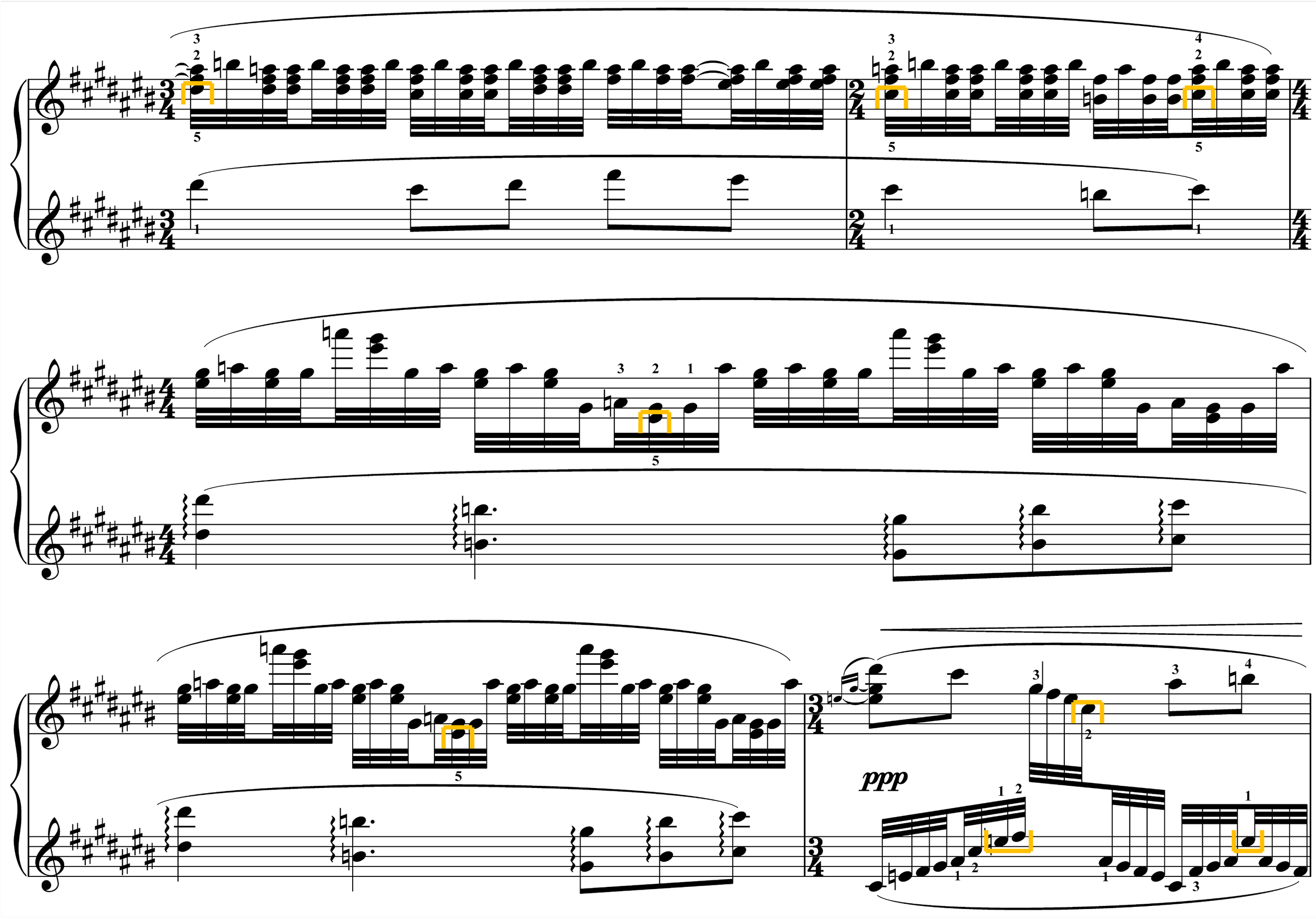SPECIAL COLLECTION | Dorothy Brandwein’s Ravel Fingerings
Published on 4/4/2022 with the author’s permission
First appeared in Dorothy Woster Brandwein, "Divisi Fingering in Selected Passages from Ravel's Solo Piano Works" (DMA diss., University of Missouri–Kansas City, 1981), 26, 29, 93.
26–27: “Constant thirty-second note figurations provide an undercurrent of sound throughout ‘Ondine.’ Measures like those in Example 6 can be played smoothly and with less effort when the notes are taken by the hand closest to them… The above measures, as well as those in Example 7, illustrate a consistency in the note patterns and their fingerings.”
29: “A recurring harmonic figuration in "Ondine" which encompasses two or three octaves presents an extreme problem for the right hand [mm. 15–16]. The difficulty is the rapid shift of the thumb required at the bottom of the pattern which propels the hand back up to the top. These shifts can nearly always be avoided by playing the lowest note of the pattern with the left hand.”
93, fn10: "The pianist must be careful that this divisi fingering does not interrupt the flow of the melody on the lower staff [mm.13–14]."


















